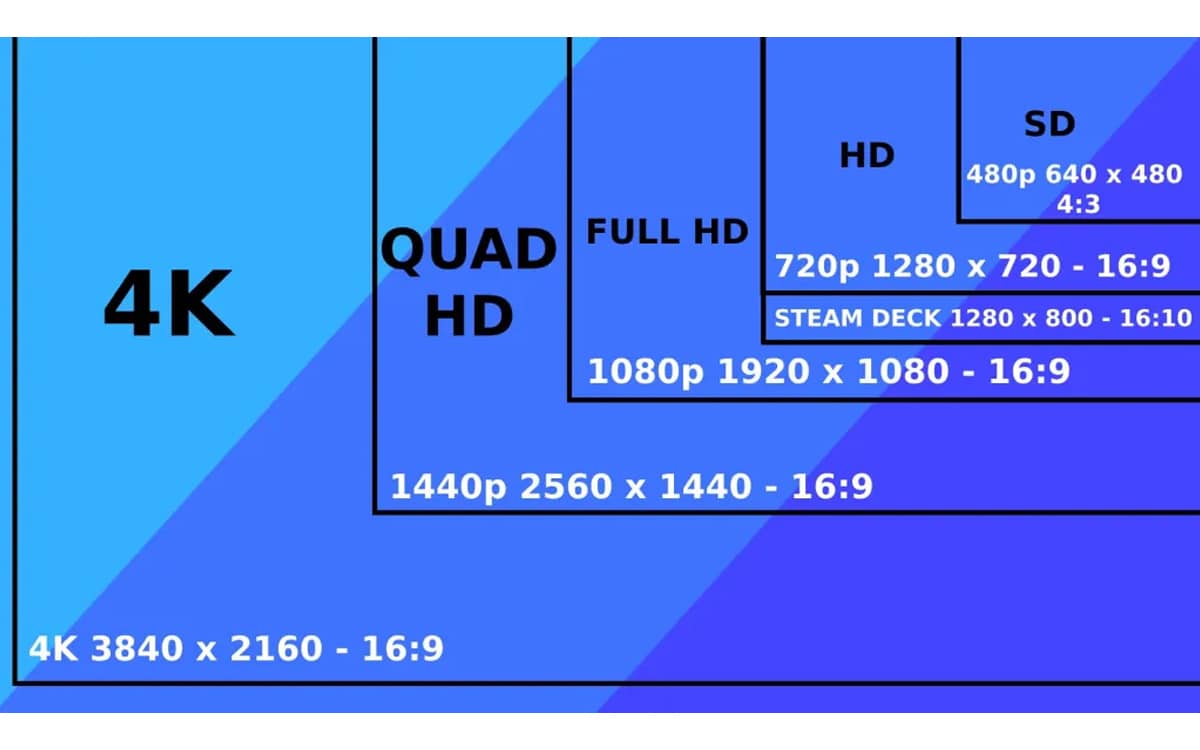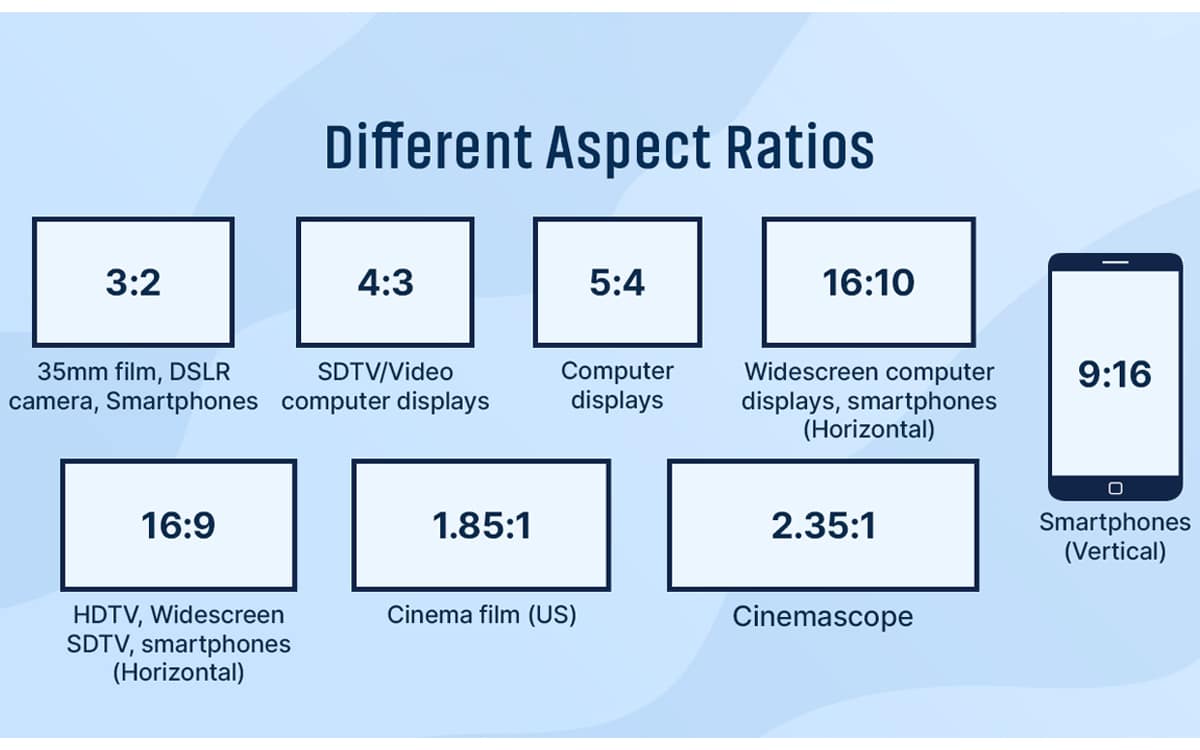For instance, what do people mean when they talk about aspect ratio? What does the term actually refer to? And why should it matter to you?
Aspect ratios are incredibly interesting to discuss because they can affect both the size and shape of your TV screen and the content you enjoy on it. Want to find out a little more about them? Check out our ultimate guide below!
What Is Aspect Ratio?
Though aspect ratio may sound like a complicated term, it’s actually very simple. Aspect ratio simply refers to the relationship between an image’s height and width! You take both the height and width of an image and then present them in the form of a ratio. Well-known aspect ratios include 4:3 and 16:9. In the case of 16:9, the image has a height of 9 inches and a width of 16 inches!
Aspect ratio is a term used to refer to both a screen’s size and the content played on it. Luckily you don’t need to pair the two exactly. You can easily play 4:3 content on a 16:9 TV.
Aspect ratio is the relation between the height and width of an image. Aspect ratio can be used to refer to content and screen sizes. Luckily, aspect ratios do not need to match completely.
When content of a specific aspect ratio is played on a screen with a different aspect ratio, it is ordinarily displayed with black bars filling up the empty space. For instance, if you were to enjoy a rerun of a classic show presented in 4:3, on your 16:9 TV, there would be vertical black bars flanking the left and right of the content. If you were to watch content in 21:9 on a 16:9 TV, it would be displayed with horizontal bars above and below.
Why Does Aspect Ratio Matter?
Aspect ratios may not actually be too important for many people. The reason for this is that most TV shows are now produced with 16:9 aspect ratios in mind. Most popular TV displays from major manufacturers are also produced with 16:9 aspect ratios. This means that most TV shows you tune into will fill up your screen perfectly.
Most Hollywood films are produced with 21:9 aspect ratios. This results in the “Letterbox” format characterised by its horizontal black lines.
Aspect ratios mostly matter to those who find the black bars annoying. After all, what’s the point of having a wide TV screen if most of it is gonna be taken up by wasted space when enjoying 4:3 content?
If you have a particular preference for watching Hollywood films, you might benefit more from a 21:9 TV screen, which allows films to take up the entire screen space. Unfortunately, these TVs are not easy to find, as they are not in heavy demand from consumers.

How Do You Change The Aspect Ratio Of Content?
If you do find the black bars on the sides of your TV screen particularly annoying, don’t worry. There are quite a few ways to remedy the issue.
Cropping and stretching are two options that can help to remove black bars from an image. The only problem is that both will result in an unsatisfying image that’s cut off or distorted!
However, it’s worth noting that removing black bars from an image will result in the image being altered. Generally, there are two options available to fill the space taken up by black bars.
Cropping
One way to fill up empty space on the TV screen is to crop the image of the content you’re enjoying. In order to do this, the content is zoomed in, until the image completely fills up all of the available screen space. While this does prevent the image from being distorted, it does result in much of the image being cut off. This can be particularly annoying for cinema fans who want to take in every detail in the frame.
The cropping option is often referred to by a different name, depending on the TV model you are using. In most cases, it is referred to as “Zoom”. The crop option can usually be found within the display options in your TV’s system settings.
Stretching
Another option is to stretch the image out to fill the empty space in either direction. Let’s say you were enjoying a 4:3 show on your 16:9 TV. Stretching would result in the image being pulled horizontally in both directions until it took up the entire screen space. While this does mean that you don’t miss out on any part of the image, it can result in images looking distorted.
With low-resolution content, stretching can also result in the image clarity taking a significant dip. The stretching option is often referred to as “Fit To Screen” on most TV models.
Frequently Asked Questions
What Is Aspect Ratio On A TV?
Aspect ratio is used to refer to the relationship between an image’s height and width. Aspect ratio is often used to refer to TV screen sizes, with most TV screens being 16:9. It can also be used to refer to the size of an image. Most modern TV shows are produced in 16:9, perfect for popular TV sizes!
What Is The Aspect Ratio Of 1920×1080?
The aspect ratio of a 1920×1080 TV screen is 16:9. Most TV shows and online content are produced with a 16:9 ratio in mind. This makes 1920×1080 TVs a popular option. There are TVs that boast a 21:9 ratio, but these have a very different total resolution.
What Is The Normal Aspect Ratio?
The most common aspect ratio used throughout the TV industry is the 16:9 ratio. Most TVs on the market are produced with the 16:9 aspect ratio in mind. As such, many of the world’s top TV shows are produced at a 16:9 ratio, to suit these screens!
Which Aspect Ratio Gives Best Quality?
Most content is produced at 16:9 aspect ratios. Most commercial displays, from phones to TVs and tablets, are made with 16:9 aspect ratios. This means that if you want your content to look its absolute best on most displays, you should aim to produce it at 16:9.





